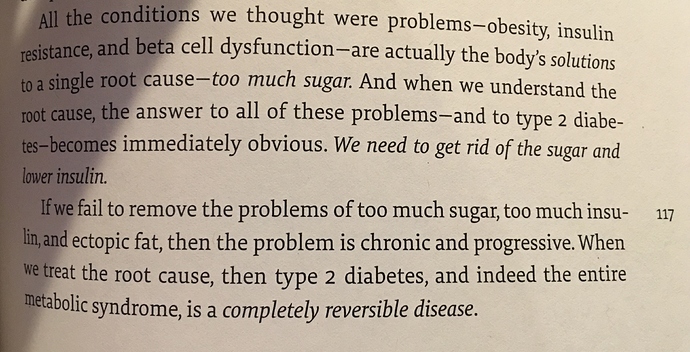Much of what he has in Obesity Code, but even more user friendly; it’s a great book to give to friends and doctors who don’t get it!
I am a lover of all thing Dr. Fung, because his teaching and writing has completely changed my life by applying the simple things he teaches!
If you like Obesity Code, you will refresh what you learned and extend understanding in Diabetes Code, and if you haven’t read the book he co-authored with Jimmy Moore, the Complete Guide to Fasting, that should also be on your must read list! Excellent helpful info from doc and a guy who lost 180 lobs. on Keto and has kept it off for 15+ years!
I also LOVE dietdoctor.com for the high quality information it provides and also LOVE Dr. Sarah Hallberg https://www.youtube.com/watch?v=ESL3_7sdCwU&t=14s there are six chapters in this new set of videos. She is a leader in the field as well!
There are LOTS of bad keto “experts” out there, but the above are all medically sound and wise in the approach they offer.
One last thing…yes, I am over the top with all things keto because I have completely cured my T2D and am reversing long term insulin resistance plus losing weight and improving all my lipids without ever being hungry, not to mention losing 67 lbs so far!
There is a ratio that nobody talks about much to help you determine how to compute your macros for effective, slow and steady change that I learned from my Keto Nutritionist, Randall Evans who is in the Integrative Med Dept. at KU Medical Center.
Here is the formula he gave me and which has kept me healthy and healing (yes there are options, but this is good sound medical keto ratios-more exercise will alter this, but this is a great starting place):
A helpful FYI personalized formula from my Keto Nutritionist is a 1:1 ratio (or more on the fat side)
Protein grams + Net Carb grams : Fat grams (1:1)
To accurately figure your keto macros ratios you need to know your lean body mass index and then it is multiplied by activity level (.5 sedentary to 1.0 active) to determine total protein. That is your protein macro.
Use 20 carbs for strict keto macro. And then to figure fat macro, add together your protein number and carb to get a total; that number is
your fat macro.
Simplified Example:
Lean body mass is 100 lbs
Activity/Exercise level is multiplied by .5 (sedentary) to 1.0 (active and athletic)
100 x .5 (sedentary) = 50 grams protein daily
Net Carbs = 20 net carbs for strict Keto
Formula says to add 50 g Protein + 20 g Net Carbs = 70
Match the 70 to get the 1:1 ratio to create 70 g total Fat
Fat can go higher to keep hunger at bay so the ratio can increase fats for hunger and you will still lose so long as you don’t get crazy with excess overeating.
Obviously this can be adjusted if more active and depending on carb sensitivity - keto MUST be personalized to you for it work continuously and to feel good.
Don’t forget to readjust macros as you lose weight!

